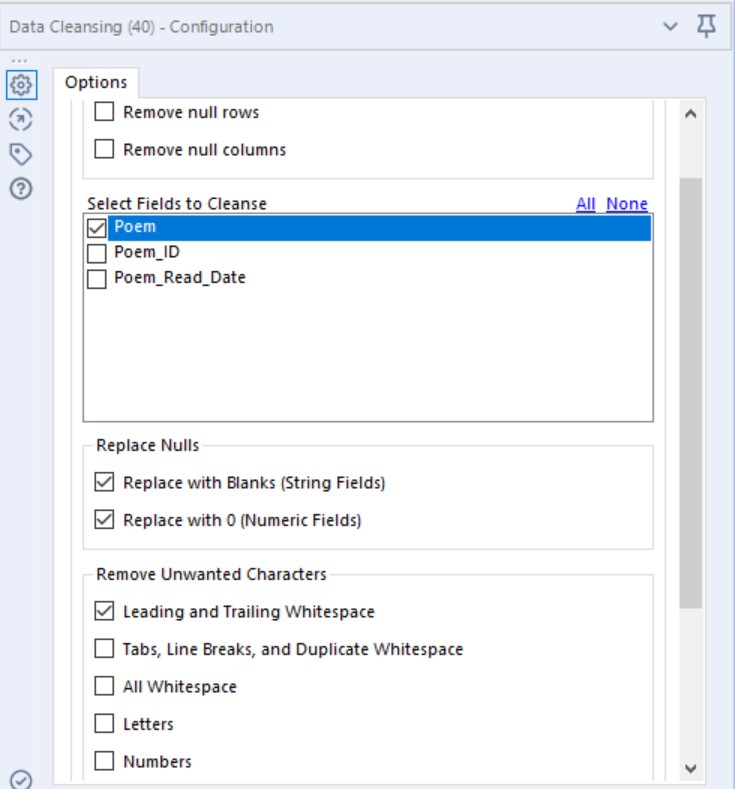Have you ever stumbled across the perfect data set? With all the columns and rows correctly pivoted and neatly titled with no additional text sprawled across the top of the workbook? With dates and numbers formatted correctly and not a single typo or null value to be found? No, I didn’t think so. These data sets tend to be the stuff of mere fantasy and rarely exist in the real world.
Perhaps (like me) you have also attempted to join data from multiple sources and have spent hours on Excel desperately trying to piece the data jigsaw together while simultaneously clinging onto the will to live. Well, with Alteryx, these are all issues of the past…
Alteryx is the perfect solution for data prep, providing the user with complete autonomy to quickly and easily cleanse, manipulate and blend data from multiple sources with its intuitive drag and drop tools. Each tool allows the user to zero in on the certain aspect of the data set they wish to amend. For example, this data cleansing tool has the ability to remove unwanted spaces, punctuation or null values from the whole data set in one fell swoop with a simple ticking of a box.


These tools are linked together creating a workflow, which shows the user a step-by-step progression of how they have altered their data set. To complete a workflow, an output tool can be dragged and dropped at the end of the flow and the new and improved data set is ready for use.

Here at the Data School, we primarily use Tableau and Alteryx as our trusty sidekicks on our data analytics quest. Despite not being quite as glamorous nor as visually striking as Tableau, there is no denying the importance of Alteryx throughout the process of data analysis. After only two sessions of using Alteryx, my entire outlook on data preparation has changed and I’m only just becoming familiar with a handful of the tools that Alteryx has to offer, which include spatial tools and predictive analytics tools.
For any business with overwhelmingly large and messy data sets, there can be no better solution than Alteryx. What’s more it doesn’t require any coding to use it and it can handle any sized data set.
To familiarise yourself with Alteryx, the tutorials section on the software is the best place to start – offering guided walk-throughs of the basic tools and what they each entail. There are also weekly challenges, providing an initial, messy data set (input) and how it should look after an Alteryx workflow (output). The challenge is to create a workflow which reaches the desired output. With 228 challenges to choose from, at beginner, intermediate and advanced levels, this is the perfect way to hone your Alteryx skills and master the art of data preparation.
